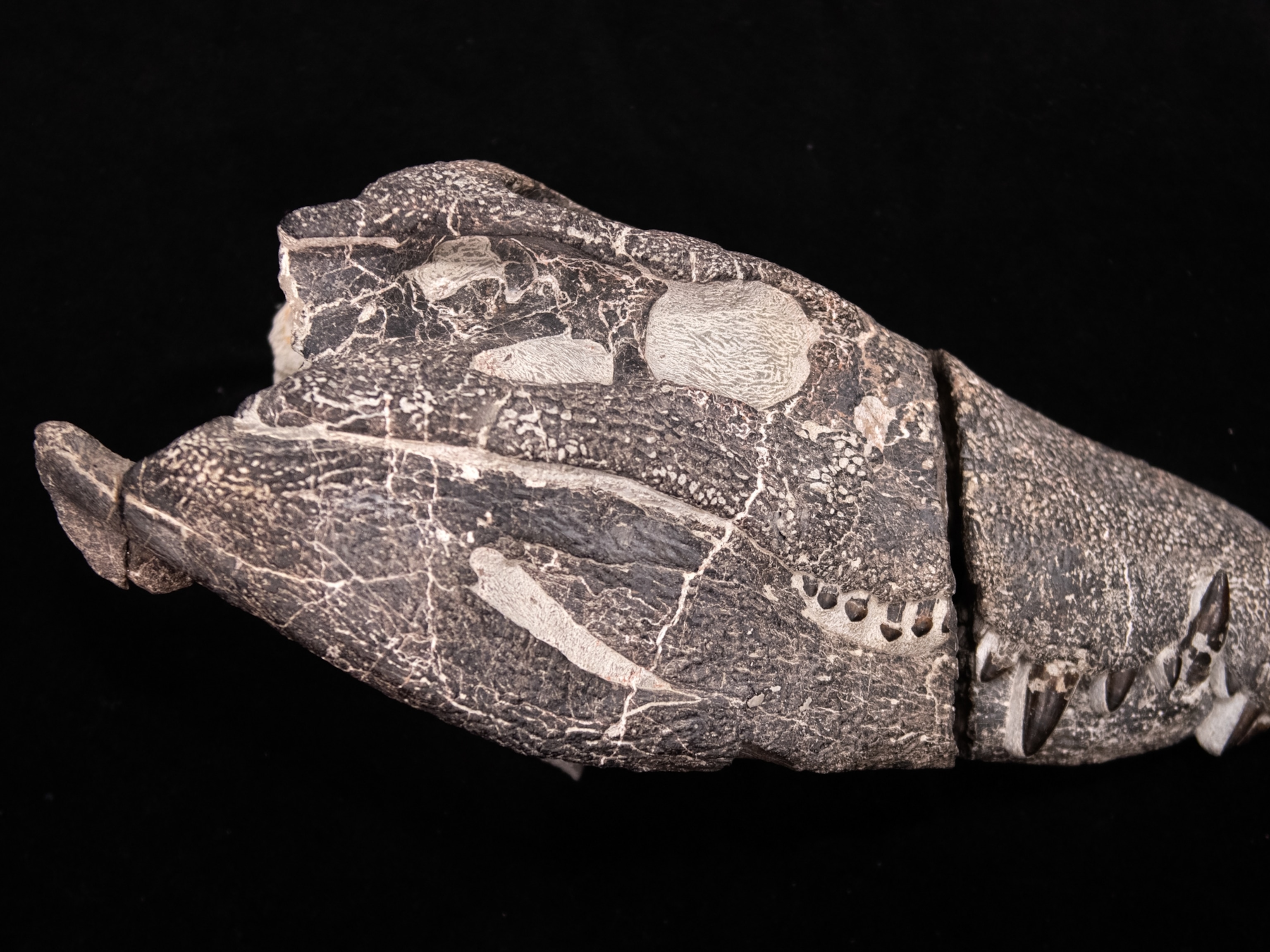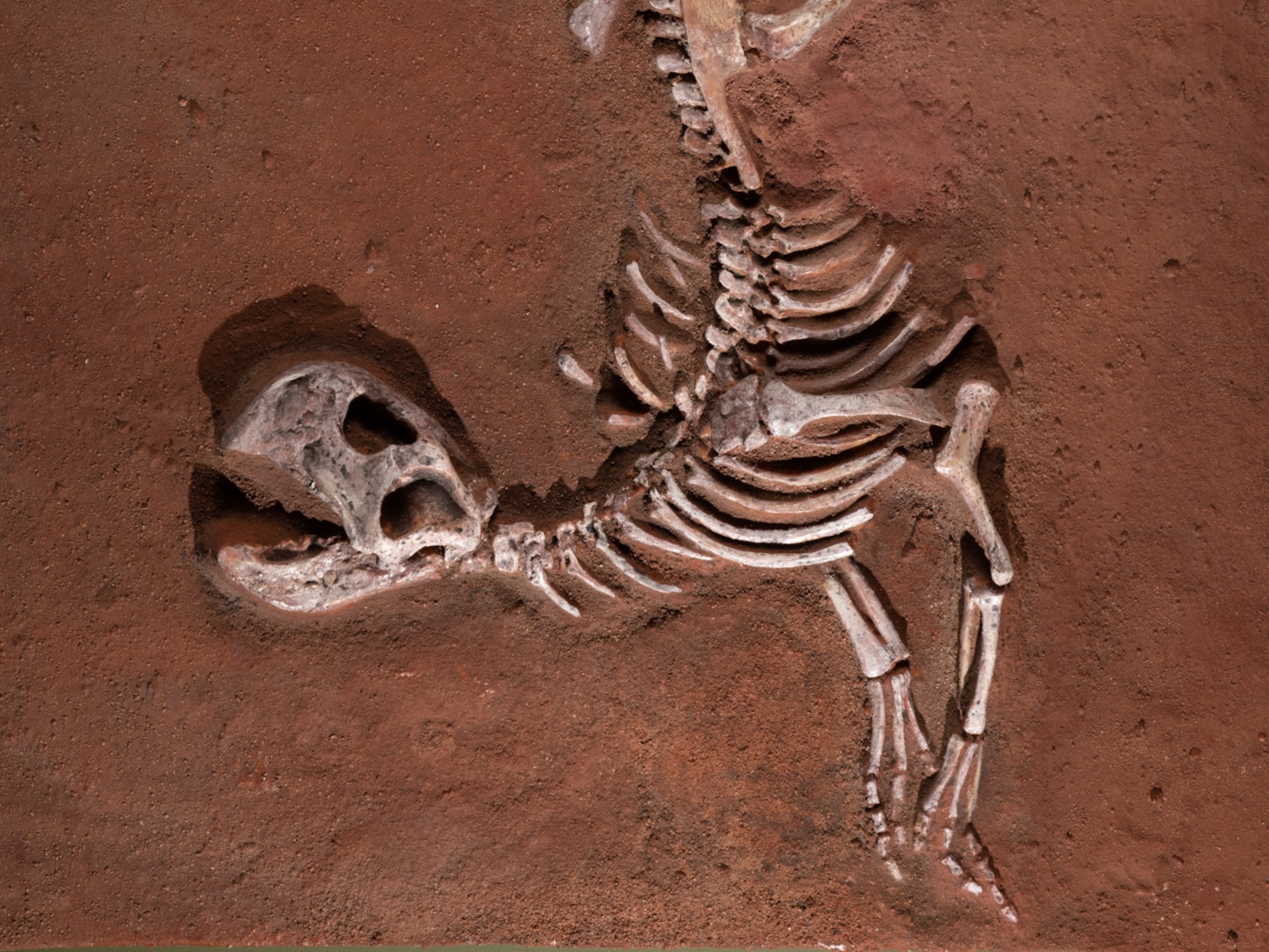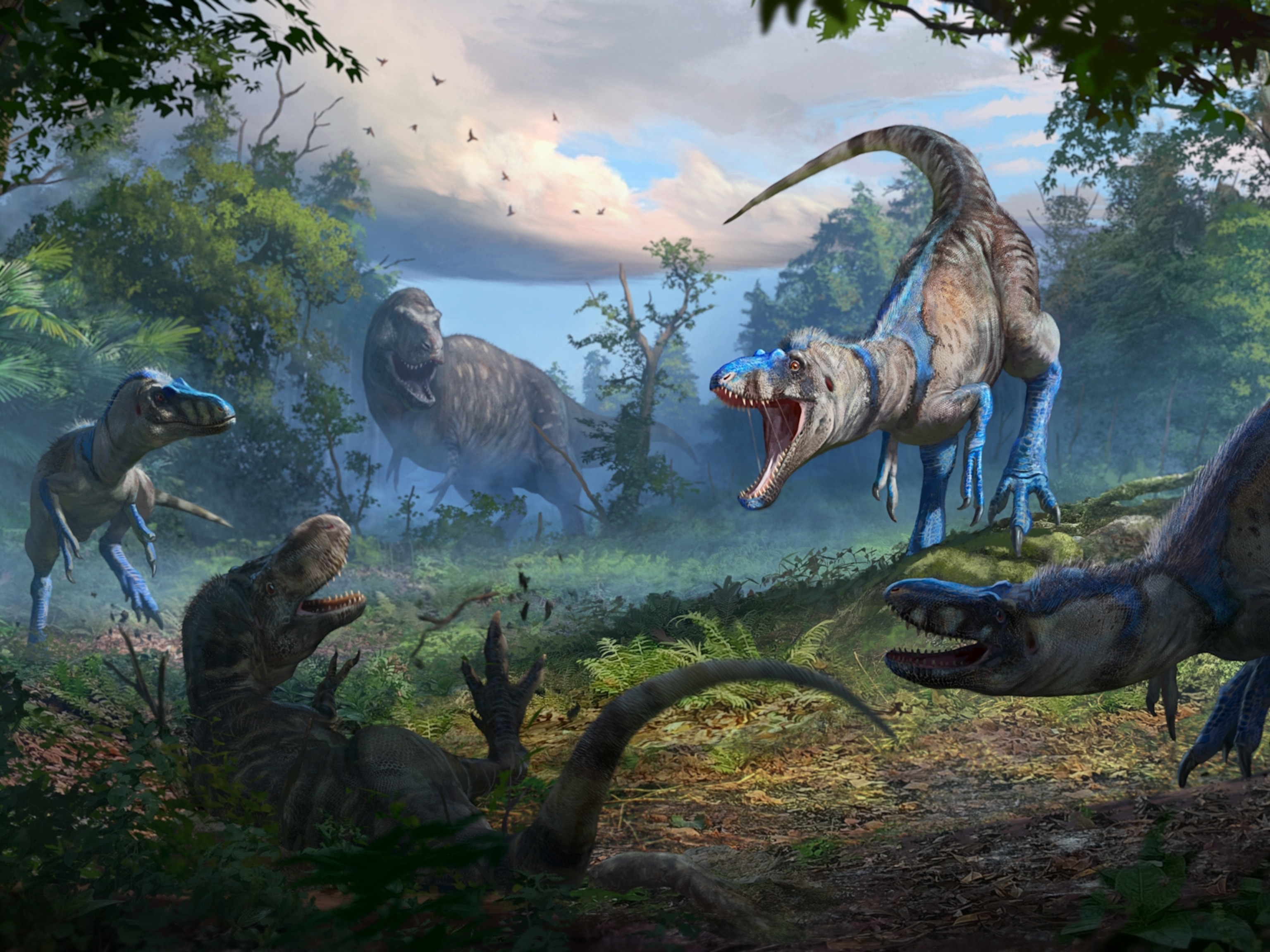WATCH: Extreme Diver Discovers Ancient Whale Skull
How did a six foot whale skull get into a Virginia swamp?
How do you retrieve an ancient whale skull buried in a Virginia riverbed? The same way you recover a human body: with a body bag.
But first … how did an ancient whale skull get into a Virginia riverbed? Millions of years ago, the Atlantic coastal plains on the eastern edge of the United States were submerged by oceans. As the oceans receded to where they are today, they left behind layers upon layers of fossils, cut through by veins of rivers.
And it was in one of those rivers that avocational paleontologist Jason Osborne discovered a giant, fossilized whale skull. Osborne, co-founder and president of Paleo Quest, had been exploring geological formations underwater sometime around June, 2013, when he literally bumped into the bone: “I might have actually banged my head into it,” he says.
The giant skull—around six or seven feet long—was clearly visible in the riverbed and reasonably intact, a rarity for these kinds of fossils.
“I spent probably 20 minutes or so around the skull to kind of determine size, what I’d have to deal with, how would get this to the surface,” Osborne says. “At the time I was like this is going to be impossible to try to recover, as massive as it is.”
It took over two years for Osborne to be able to go back and disinter the giant whale skull. He needed, of all things, a bigger boat—but one that was still small enough to travel up a river. Coral Edge Adventures, a scuba shop in Virginia, sponsored the expedition—and Osborne gathered a team that included a videographer.
“I wanted to document this,” he says. “As far as I know, there’s no documentation in blackwater conditions of a lift of such a massive fossil.”
To maneuver the giant skull without damaging it, he took a few pointers from the people who make a living doing underwater recoveries: the cops. He obtained a neutrally buoyant body bag, the kind police use to pull dead bodies from the river. The bag has a fine mesh to drain water, but it also catches any microfossils and teeth that might trickle out of the sediment surrounding the skull.
“I don’t think anyone has used a body bag for fossil recovery before,” Osborne says. But it worked, and they managed to lift the water-logged skull that Osborne called “heavy as hell” into the boat.
At the dive shop, Calvert Marine Museum paleontology curator Stephen Godfrey identified the skull’s source as a 5–6 million year old baleen whale that probably stretched 20–25 feet from nose to tail, about the size of a modern day minke whale.
Godfrey and Osborne noticed enormous tooth marks along the whale’s jaw bone, probably from a massive and ancient shark called a megalodon. The wound never healed, Godfrey explains, which means it happened around the time of the whale’s death, or after.
“Did it die and then get consumed by sharks? Or was that the death—the shark itself?” Osborne asks.
“There’s still a lot to be determined about what the significance of the critter is,” he says, including whether the animal the skull came from is a newly discovered species, or the first occurrence of that species on the Atlantic coastal plains.
But they’ll need to study the skull and dig up more fossils, first—which Osborne is just fine with. “To see and touch things for the first time,” he says, “that’s a pretty amazing rush.”
Follow Rachel A. Becker on Twitter.





